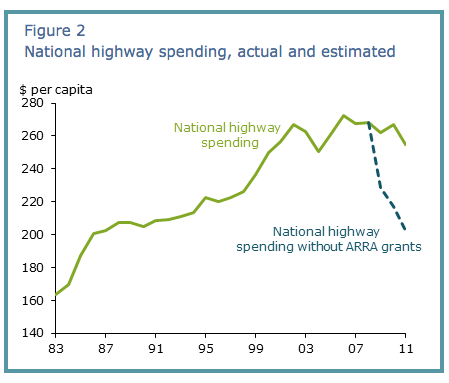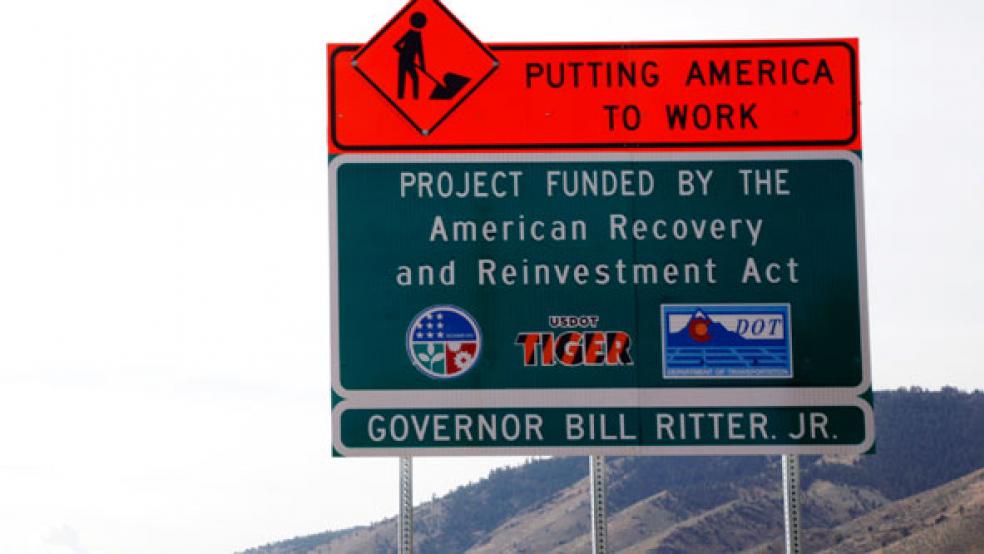In the first months of President Obama’s first term, with the nation mired in what would turn out to be the beginning of the Great Recession, Congress reluctantly passed a bill authorizing $787 billion in stimulus spending meant to jolt the economy back to life.
The American Recovery and Reinvestment Act, as it was called, had its roots in Keynesian economic theory, which made it a target for right-wing critics. And when the economy failed to turn around after it started taking effect, it was immediately dubbed a failure by GOP members of Congress.
Related: Obama Goes It Alone (Again), This Time on Infrastructure
However, a recent study by the Federal Reserve Bank of San Francisco suggests that at least when it comes to highway infrastructure spending – one of the most stimulative elements of the bill – the story is more complicated.
The stimulus was supposed to generate a spike in spending that would put people in the hard-hit construction industry back on the job. But Sylvain Leduc, a vice president in the Economic Research Department of the Federal Reserve Bank of San Francisco, and Dan Wilson, a research advisor there, found that despite the infusion of federal cash, spending on highway infrastructure across the country remained basically flat from 2008 through 2011.
“Our estimates suggest that national highway spending would have declined roughly 20 percent between 2009 and 2011, similar to the decline in state tax revenues, without the additional highway grants from the Recovery Act,” they write.

In other words – the stimulus kept highway funding steady, rather than increasing it, because of the steep drop in state funds made available to road projects.
Related: A Better Amtrak Comes with a Big Price Tag
Leduc and Wilson’s finding gives support to two different claims about the stimulus bill of 2009. First is the claim that just because it did not usher in an immediate recovery does not mean that ARRA was a failure. After it took effect and the recession continued, supporters of the bill argued that it likely saved or created many jobs that would otherwise have been lost or have never existed in the first place, a position their data appears to support.
The data also seems to vindicate those who argued that the stimulus bill was simply not large enough.
“Given the large multiplier effect from infrastructure spending that past studies have documented, the additional spending on highways likely had a significantly positive effect on economic activity,” Leduc and Wilson write.
Unfortunately, the spending appears to have been a replacement rather than a supplement.
Top Reads from The Fiscal Times:




